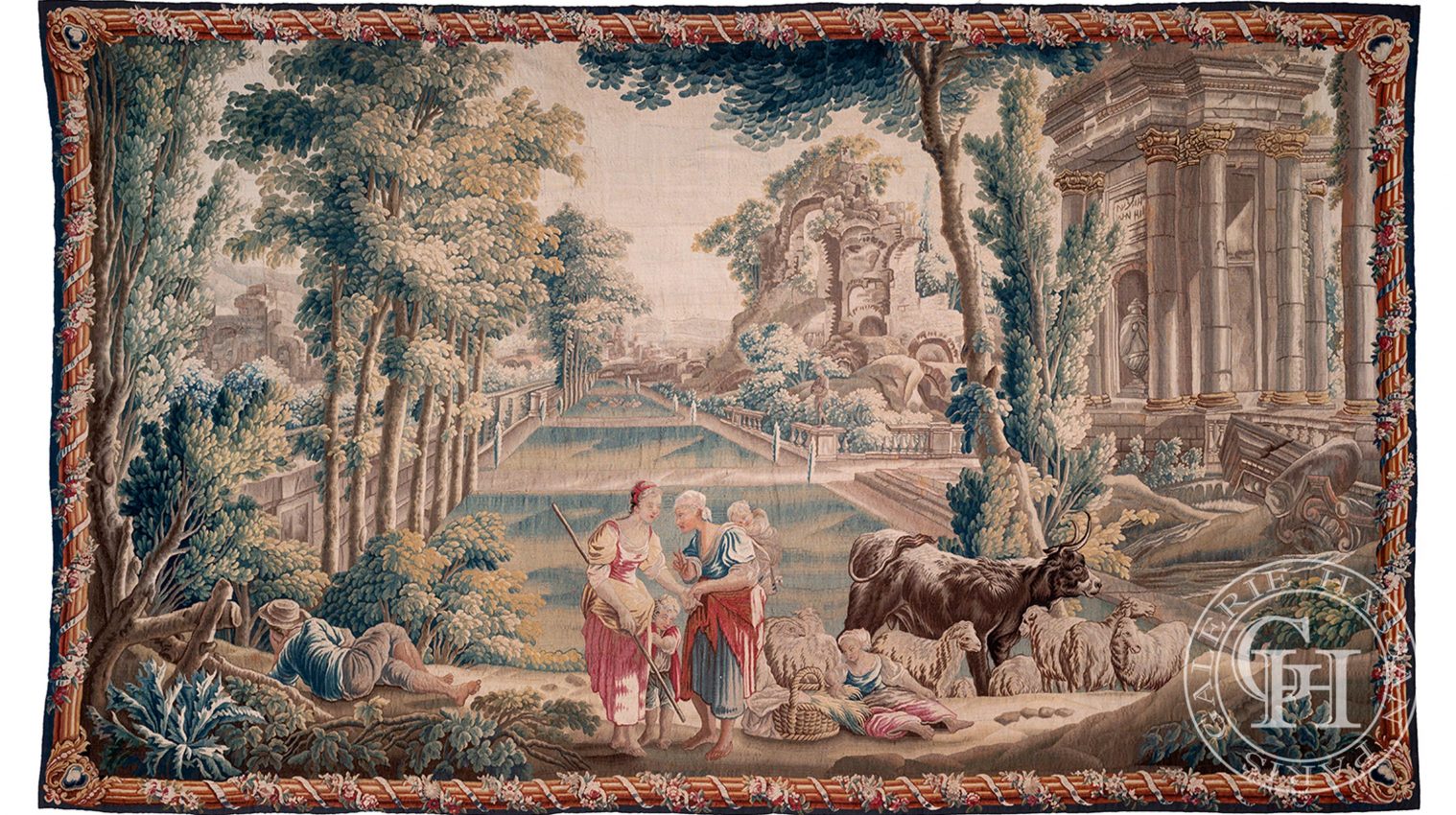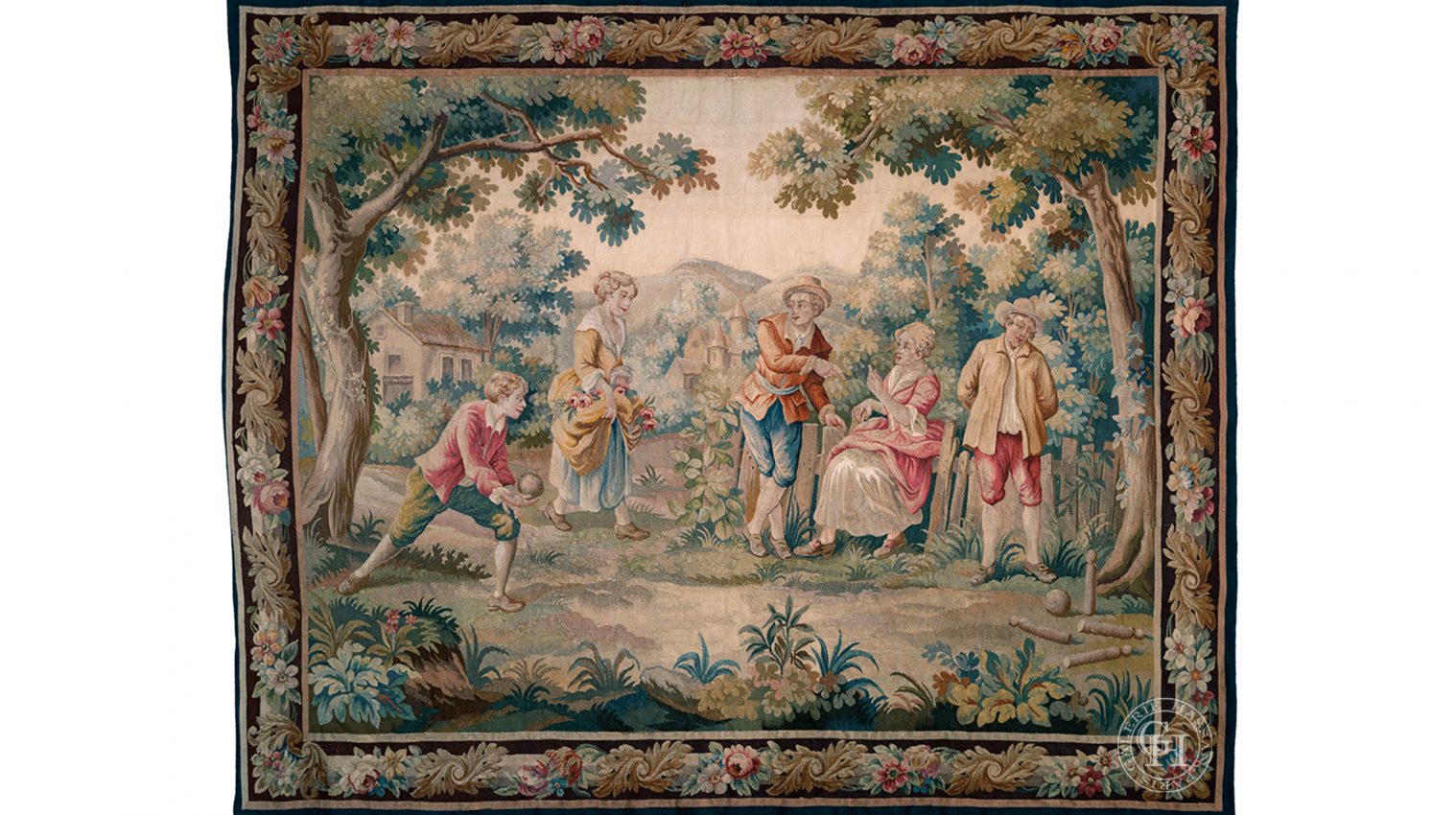Manufacture
Aubusson factory
1732
The existence of weavers’ workshops in the city of Aubusson is only attested from 1531, a date clearly later than that of the establishment of workshops in Felletin, but earlier than that of Bellegarde; the production of these neighboring towns with the same characteristics. In the middle of the 17th century, the Aubussonnaise industry was in decline, Louis XIV offered all private workshops the title of Royal Manufacture (1665) and work facilities: a painter must be sent to help with the execution of cartons, and a dyer should serve as an advisor to the various manufacturers. These people are not sent in reality until 1732 thanks to a new edict (the painter is Jean-Joseph Dumons, to whom Jacques Julliard succeeds). They are then assigned an assortment of wools and silks; red thus appears in the directory. The edict of 1732 further stipulates that the edges of the tapestries must be blue (while those of the neighboring town of Felletin must, by a similar edict of 1742, be brown) and that the maker’s mark must be woven after the mention “Aubusson”. In reality, these regulations were not applied in a rigorous way, and the preserved documents show us that the manufactures preferred to mention their title of Royal Manufacture (often in the abbreviated form of MRD or MRDB). Note that the old mark was an A and a B framing the fleur-de-lys.
In the middle of the 18th century, the houses are booming, while in the 19th century they will be obliged to make rugs in the knotted point (“Savonnerie d’Aubusson”) to be able to maintain themselves. In 1880, a revival of interest in the decorative arts slightly revived manufacturing


